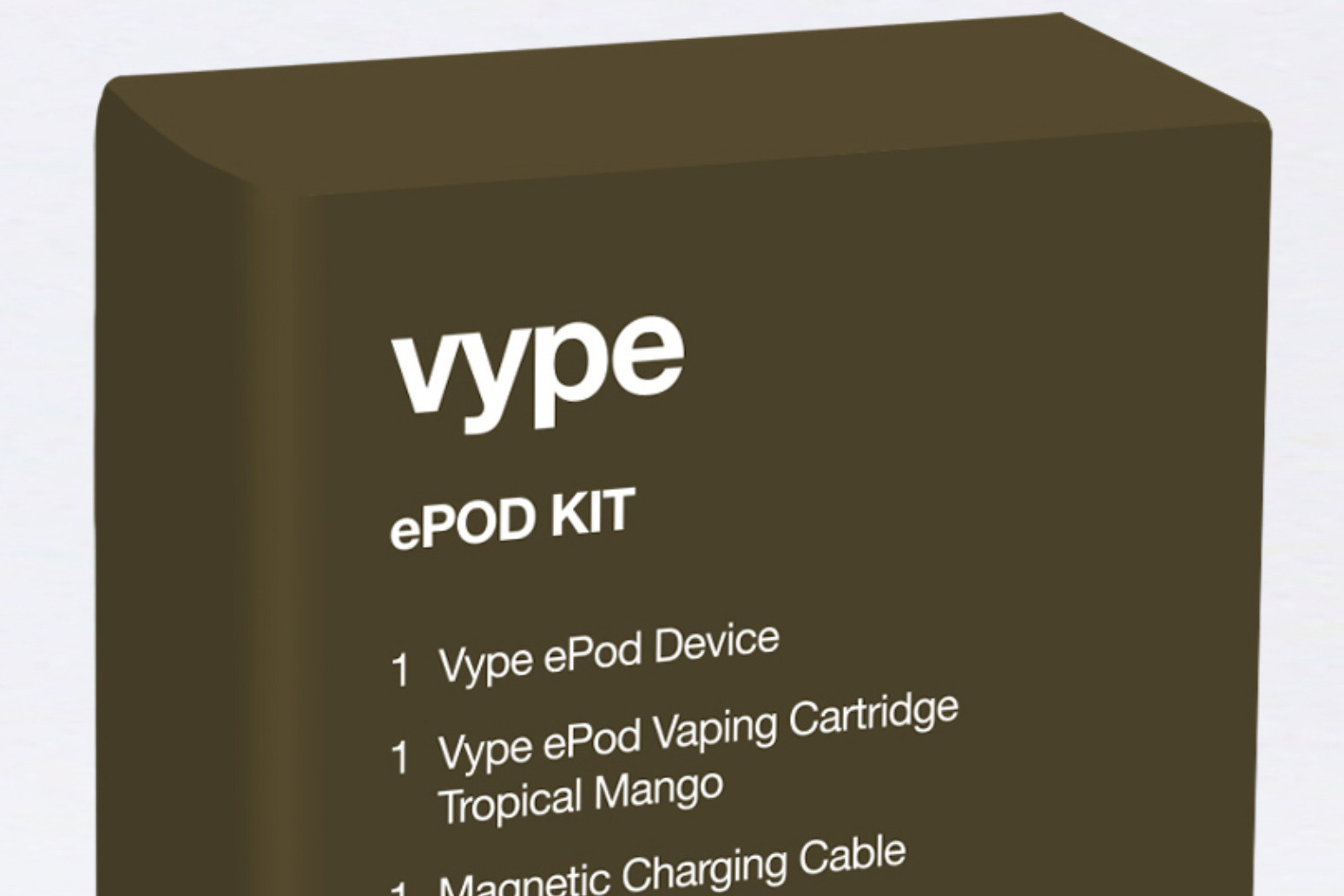
The findings come in a new study by experts from the Institute of Psychiatry, Psychology & Neuroscience at King’s College London and Action on Smoking and Health
Putting vapes in plain packaging reduces their appeal to children and could even stop them taking up vaping in the first place, a major new study has found.
Researchers discovered that removing bright colours, pictures and fancy lettering from packaging made youngsters less likely to be attracted to vaping, but did not deter adults who wanted to use vapes to quit cigarettes.
It is the first major study of its kind looking at how vaping packaging appeals to youngsters.
Research published last July found the proportion of children vaping is on the rise, with many being influenced by social media sites including TikTok.
Newer, disposable e-cigarettes are increasing in popularity, in part because they cost around £5 each and come in a wide range of colours and fruity flavours.
While it is illegal to sell vapes to under-18s, social media carries posts from teenagers showing vapes and discussing flavours such as pink lemonade, strawberry banana and mango.
Experts have warned how a new generation of disposable vapes known as “puff bars” – which contain nicotine – have flooded the market.
In the new study, experts from the Institute of Psychiatry, Psychology & Neuroscience (IoPPN) at King’s College London and Action on Smoking and Health (Ash) randomly assigned 2,469 children and teenagers aged 11 to 18 (54% of whom were aged 11 to 15), plus 12,026 adults aged 18 and over, to view a set of three vape products from one of three packaging conditions.
The first was fully branded packs, the second was plain white packaging with brand name, and the third was plain green packaging with brand name.
Those in the study were then asked which of the products would be of most interest to try.
Published in the JAMA Network Open, the study found that children and teenagers were more likely to report that their peers would have no interest in vapes when sold in the plain green or white packaging.
For example, some 36% said their peers would have no interest in vapes in plain green packaging, while only 29% said the same when it came to the branded packs.
Also, 43% said their peers would definitely be interested in vaping from branded packs, but only 33% thought the same for the green packs and 38% for white packs.
This translates into a reduction in appeal of nearly a quarter (23%) for green plain packaging, and 12% for white plain packaging.
The findings were in contrast to the adult group, whose interest in using vapes was not reduced by the plain packaging.
Dr Katherine East, the study’s senior author from King’s, said: “Vapes, and nicotine products in general, should be available to adults who smoke to help them to stop smoking but should not be used by non-smokers under the age of 18.
“Some current e-cigarette packaging has eye-catching and enticing designs.
“Our study found that removing brand imagery from packs reduced appeal of vapes to teenagers without reducing appeal to adults.
“This is a vital difference, as it means that vapes can still appeal to adults as a tool to stop smoking, particularly because our previous research has established vaping is significantly less harmful than smoking.”
The authors said their study also found that a greater proportion of teenagers who had never smoked or vaped perceived no interest among people their age in trying any of the products shown in plain white or green packaging, suggesting that removing brand imagery could deter teenagers from taking up vaping in the first place.
However, adults were not deterred by the lack of colours and fancy branding, suggesting this group would not be put off using vapes to stop smoking.
Eve Taylor, the study’s first author from King’s, said: “Britain has seen a rise in the number of teenagers using vapes for the first time.
“While there are a number of steps that policy makers can take, the ideal situation is to ensure teenagers aren’t tempted to take up vaping in the first place, whilst not deterring adults from using vapes to stop smoking.
“Our study suggests that removing brand imagery could be a means of doing that.”
Deborah Arnott, chief executive officer at Ash, said: “This research shows that it’s possible to make vape packaging less attractive to children, without undermining the appeal of e-cigarettes to adult smokers trying to quit.
“The Government should take note and commit to implementing standardised packaging for vapes and vaping products without delay.”
This study received funding from Cancer Research UK.
Last month, England’s chief medical officer attacked the “appalling” marketing of vapes to children – saying it was clear some products are intended to appeal to under-age people.
Professor Sir Chris Whitty told MPs: “I think everyone agrees that marketing vaping, an addictive product, with, as you imply, unknown consequences for developing minds, to children is utterly unacceptable.”
An Ash report last year found the proportion of children aged 11 to 17 currently vaping jumped from 4% in 2020 to 7% in 2022.
In 2013, just 3% of children aged 11 to 15 had ever vaped, but this rose to 8% in 2020 and 10% in 2022.
John Dunne, director general at the UK Vaping Industry Association, said: “As is shown by the research from leading public health institutions around the world, vaping remains the most effective way for smokers to quit.
“The UKVIA believe that more can be done, and should be done, to limit youth access to vaping products. But the answer is not on packaging regulation, but by cutting off access at source – by effectively policing the sale of vapes to under-18s.
“Alcohol sales to under-18s are effectively policed without recourse to packaging and there is no reason to believe this cannot be the case with vape products.
“The UKVIA takes the issue of youth vaping extremely seriously and we recently wrote to the Secretary of State for Health and Social Care and proposed a number of steps to come down hard on those who sell vapes to minors.
“These proposals include greater powers for Trading Standards, a licensing scheme for approved retailers and increased penalties of at least £10,000 per instance for traders who flout UK law.
“Furthermore, we have proposed the introduction of a national test purchasing scheme to ensure all the country’s retail operations are performing to high standards when it comes to preventing youth access to e-cigarettes.”
Dan Marchant, from retailer Vape Club, added: “I agree wholeheartedly that people under the age of 18 should not have access to vape products, but the problem is not really the products, the problem is the rogue traders who sell them to children.”
Published: by Radio NewsHub


